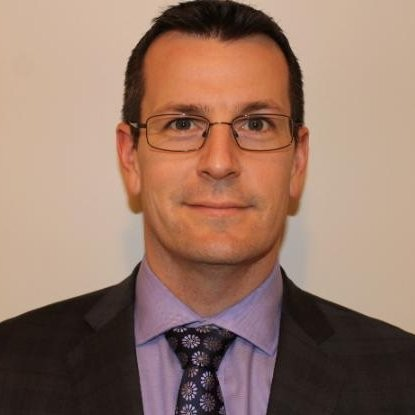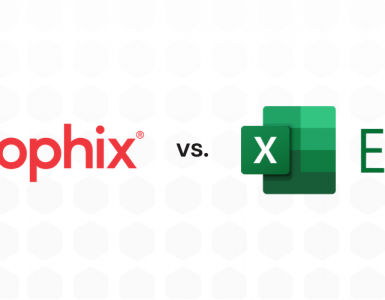Digital transformation may be the most profound change the office of finance ever experienced — and that’s including trading in abacuses for calculators. It’s a shift from numbers to data, from reporting to predicting, from observing to advising.
Artificial intelligence and machine learning are at the center of this next evolution of finance. These technologies will automate repetitive tasks, help surface relative data, and more.
Adopting new technology is not an easy process, however. Doubly so for game-changing technology like AI. There are plenty of variables to consider and decisions to be made. It can be challenging just figuring out where to start.
To help CFOs get a head start on this transformation, we talked to John Colthart, VP of Growth at MindBridge Ai. John is an AI expert with years of practical experience in the field.
Read on to learn what skills CFOs should be developing, where to start investing in AI, how to secure budget, and more.

Prophix: It seems like one of the easy wins people could start with is using AI for data sanitization. What kinds of data problems can AI fix with today’s tech?
John: Well, AI for a finance organization is about one of two scenarios, right? One is more around the robotics/process automation concept. It’s about using AI to immediately classify data that’s coming in for payment, so that you’re reducing the overall drain on the bookkeeping system, and things are being automatically attributed. So it’s less about finding the error, but actually more about creating better sanitized data in the beginning.
The second part of it is finding errors and fraud, and this is really about going past the traditional reconciliation. So in a business, you go through this process of reconciling things: your bank balance to what actually hit the books, to what your bookkeepers have been entering in. You look at specific receivables and you go back to your CRM system.
AI can actually start doing a more intelligent level of reconciliation. Not just less people-driven, but actually spotting things that are anomalous, that have the potential to be fraudulent.
Now, I would say that AI never catches fraud per se. AI catches the errors and the anomalies, the potential for issues that an auditor, an accountant or financial professional would then investigate. When they do that investigation with the right information from the AI, they’re able to be more specific in their questioning, and they’re going to be able to find intent. The minute they find intent, they’re going to be able to claim that as something fraudulent.
Right now, we’re able to take massive amounts of data from the core sub-ledgers and the general ledger, and actually look for those anomalies dynamically. You’re able to start seeing all those potential insights or those potential errors immediately, versus having to go through quite a blocking and tackling mode to go and normalize the data, sanitize the data because machines now understand hierarchical relationships of data. They understand the counting methodologies.
So it’s about identifying what transaction patterns don’t make sense: Is there an area where a vendor or customer is doing something they shouldn’t? You know, billing you more often, paying you by different paying methods that don’t make any sense, or in different currencies. These things happen today.
So I think that right now, there are products out there that are really harnessing the power of the machine to streamline, highlighting the right errors for the professional to be able to say, “Ah, that’s an issue, I need to go deal with that.” So if it’s an overpayment, claim it back, if it’s an underpayment, obviously, go and pay so that you’re not ever brought into arrears.
Prophix: It’s good to hear you talking about the handoff between AI and the human auditor. We definitely want humans to be in the equation! How should finance leaders make sure they’re making their jobs “AI Proof” — that is, what tasks and skills should they focus on?
John: I think there’s a bit of a misnomer in the industry today, with people saying that AI is going to remove jobs. It’s a little bit like the first and second Industrial Revolution. Take something as simple as car manufacturing. If you look back to the early 1900s, Ford used to say, “You can have any color you want as long as it’s black.” So he was able to put robotics in place to make things easier and streamline things. But then fast forward to what Elon Musk is doing with Tesla. He’s actually going away from certain robotics because there are things that they’re just not great at, and putting humans back in.
Making your job “AI proof” is not how I would phrase it. I would see it as AI augmented. How do you as a professional become aware and comfortable to be assisted by this technology? To be able to use it to the best potential for your organization, to make better insightful decisions?
I think from a task perspective, try to find those areas where a machine can do something faster, better, easier, and then you’re the oversight person. So whether that’s in using robotic process automation for doing payables or even receivables, or using AI in your contract review process, The skills that you need to start working on start becoming hyper-analytical.
You know, most finance professionals that were trained in the ’80s and ’90s had to make this massive transition from rudimentary compute systems like calculators into automated compute systems like Excel, Lotus 123 and PhysiCalc. The generation that’s from the ’90s to the 2000s, just lives and breathes in numbers and Google Sheets, and Excel. So to turn that into an amazing skill, you must become even more analytical. Take those skills that you learned, try and find the interesting data, get the input from the AI, get the input from the technology, and then use that to further enhance your analysis. Don’t be afraid of it.
Make sure that you’re constantly looking at it as, “How does this augment me? Could I do more for my business by using something like a technology that is in the AI veins to better the system and the processes, and give me more time to say, ‘Does this really make sense?”‘
And I think back to the first point about errors and fraud. You know, the goal of doing some of these things, is to prevent fraud and to prevent the errors from happening. So now you become this insightful person augmented by AI, that allows you to actually go through and make sure that you’re using the right information to give you a better view on what the data is saying. You can get out of this complete rear-view mirror mode and actually start being able to forward-looking plan. By knowing that, you’re not doing this mundane task to go back 12, 15, 18 months, to review data; you have a system bring you 5 or 10 things that you need to look at, and assume that the rest is within the parameters of health.
[bctt tweet=”#CFOs need to be more analytical, spend time learning more about machine learning and the components within AI and natural language understanding, and use that to be more analytical. – @jmcolthart” username=”prophix”]To sum up: Be more analytical, spend some time learning more about machine learning and the components within AI, and natural language understanding, and really then use that to be more analytical.
Prophix: One of the big questions we keep hearing is, “How can I jump into this when I don’t know anything about AI? Do I need to get a PhD in data analysis?” How much does a CFO really need to know about this to make it work?
John: So I think within the context of the CFO and the senior VPs underneath him or her, it really does come down to being aware that these technologies do exist and being aware that they’re an augmentation. They’re not a replacement. I mean, most CFOs are being asked, as they have been for the last two decades, to do more with less. “Give more insight. Give me more information. Process things faster. Close the books. You know, instead of seven days, I need it done in five days.” They’re being asked to do these things with less and less staff.
And I think a lot of times, people in that position start thinking, “Oh, my gosh. I’ve got to outsource some pieces. I’ve got to go do this. I’ve got to go do that,” because it’s just too hard for them to contain all the work. Not to mention regulatory compliance that may be hitting them as well. So, the CFO really needs to embrace the fact that there’s technology out there. I think they need to be one of the centers of innovational change within an organization. They should be focused on how can they make better information available to folks that are out in the field making the decisions day in and day out for the business.
[bctt tweet=”The #CFO needs to embrace that fact that there’s technology out there. They need to be one of the centers of innovational change within an organization. – @jmcolthart” username=”prophix”]You can see that in every industry it’s going to be slightly different. Folks on the manufacturing line, or running a manufacturing line, versus sales folks, versus human resource folks. Everyone needs better insights. So I think CFOs need to be very aware that there’s Artificial Intelligence tooling that’s out there, that supports their world, which is all about better analysis, better future-looking planning, and keeping the right focus on being financially viable. But at the same time, they’re being asked to be parts of the team, parts of the broader decision-making team to propel the company forward.
So I think they even need to extend out and start looking at, well, how can AI be used in things like sourcing the right candidates? If they’re a manufacturer, how can AI be used to understand the gaps in a manufacturing process? They need to be aware of where else in their business things are being leveraged because, at the end of the day, they’re going to be responsible for funding.
I also think they need to be aware that it’s an area that is going to continue to grow. In Canada alone, there are over 500 AI startups. There are thousands in the U.S. This is going to be something they’re going to have to deal with. So it’s about understanding that it’s there, and then starting to push forward to see what are their business priorities as a whole? You know, clean their own house, make sure that they’re using AI in some way to augment their team. But then I think they also need to be very aware of what’s impacting their various other VPs across the lines of business.
Prophix: What is the best way for CFOs to start learning about the technology and how to apply it?
John: Every CFO will have a different slant on how deep they want to go in terms of their own training, their own exposure. There are great, free online resources out there.
Start with your search engine. If you want to really get deep, go into code. Go into something like Big Data University, which is a collaboration that IBM kicked off. But if you’re looking at it, really start going towards your professional body. Because every single one of them is trying to find how to help you. Those professional bodies are absolutely looking at the CFO wheelhouse, and saying, “As practitioners, as charter accountants, or finance professionals, we have to do more.” So the Institute of Management Accounting, the IFAC team, the Forensic Accountant, every single one of these groups is putting out lots of great bulletins. So go to your membership body and subscribe to some of those items.
Prophix: What types of skills should CFOs be looking for in new hires?
Make sure they’ve got business acumen and make sure that they’re analytical. Those two things are going to be great assets for getting into the AI space, because AI is all about presenting you new information that you didn’t have before. But then, someone’s got to act on it. How can you leverage that data? And that’s about being analytical and spending a lot of time in the business space.
Hiring data scientists for the sake of claiming that you’ve got them, is probably not going to be as effective if you don’t know how to help them solve your problems. Which is why that business acumen piece is critical. So you need a mix of folks now. You want to put a team together that’s got deep finance and accounting skills, and conceptually from the domain itself, business skills, and then a level of computer science/data science. If you’re able to have three people that have overlapping knowledge of finance, business, and computer science, but each one has deeper skill in one of those three pieces, that’s a high powered team that a CFO can tackle lots of problems with.
Prophix: How can CFOs get buy-in from the rest of the organization to move forward with AI?
John: You know, I think it’s a really challenging problem. I think the biggest challenge that AI has, is in fact, that everyone believes that it’s a multi-million dollar ask and a multiple year journey. I agree with it being a multi-year journey, but I disagree that it has to be multi-million dollar ask from around the table.
I think what people need to realize, is it’s not going to be a one size fits all. You’re going to implement a piece of AI. It’s a journey. You need to find out how you can start in the smallest amount with the highest impact. And so when you think about it, it doesn’t need to be multi-millions. It will be a multi-year journey. But if you take them one quarter at a time, you’re going to get better buy-in. Especially if you’re looking at it from, “How do I create the best time to value?” What you want is to say, “I’m spending a dollar, and I’m making $2 by the end of the quarter.” That’s the type of ROI case you’re going to end up having to make.
[bctt tweet=”It’s not going to be a one size fits all. You’re going to implement a piece of AI. It’s a journey. Find out how you can start in the smallest amount with the highest impact. – @jmcolthart” username=”prophix”]And that means that you’re going to have to be diligent. Look at what other C leaders are thinking about, what the strategic goals are for the business as a whole, and then help them find an AI implementation that fits the model. One that can get done inside of a quarter, inside of a small enough time sequence that it’s meaningful to you. And then you’re on the journey.
Three years from now, we’re going to be talking about some pretty amazing systems that might be combinations of different platforms and products coming together. There’s going to be lots of change, but you’ve got to get the team used to this idea of biting off a little bit at a time.
How do you eat an elephant? One bite at a time. There are lots of little things that you do to help the rest of the C suite be more effective. And again, I definitely challenge the multiple million, multiple years to get one thing done. You may find that there’s huge value in spending millions because I think you will end up spending millions, but you only need to do it in small chunks, and create a journey as a team journey, to rack up wins as quickly as possible.
John Colthart is the VP of Growth at MindBridge Ai. Follow him on LinkedIn and Twitter. For more insights from AI and finance leaders, check out our AI in finance resource center.






